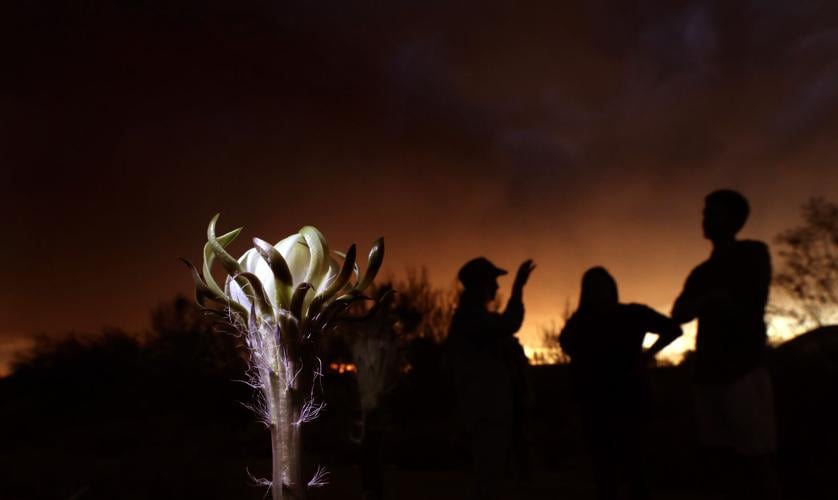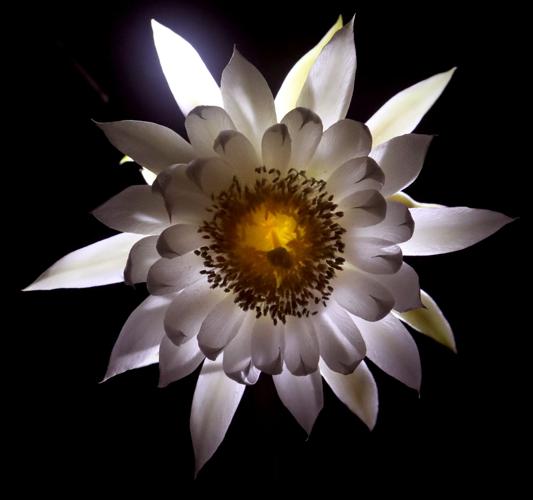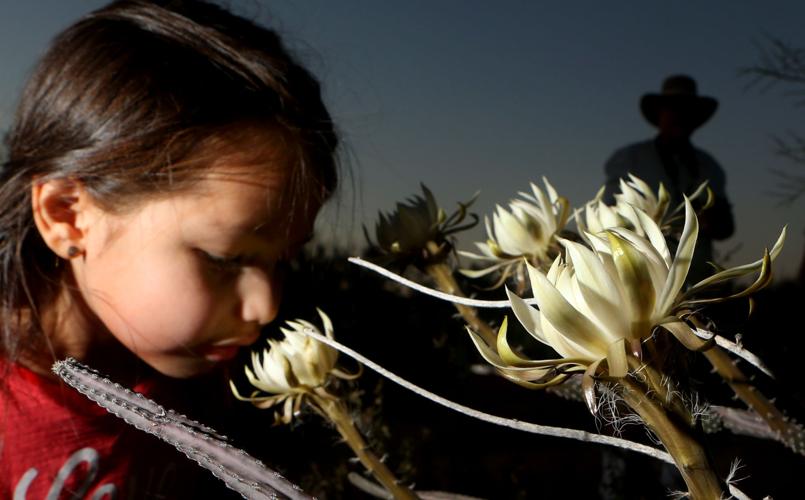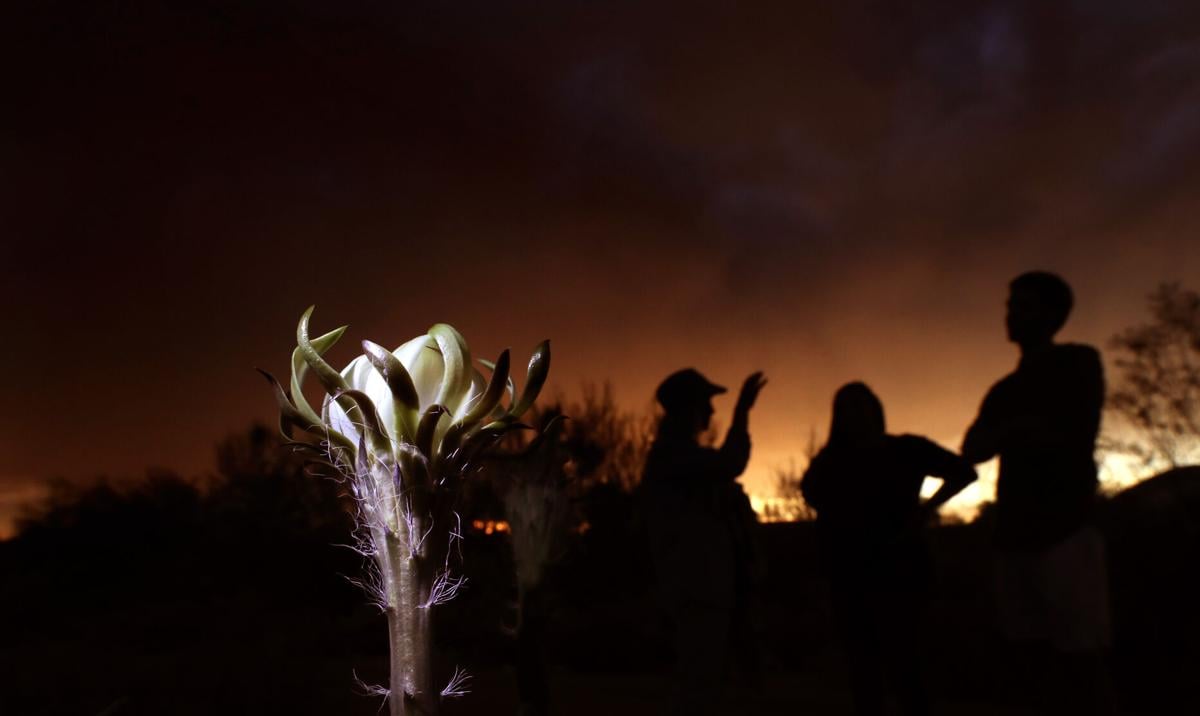One day each summer, Tucsonans flock to Tohono Chul, walking amid the trails with headlamps lighting the way.
On a normal afternoon, you might question this. But on Bloom Night, you’d wish you brought a headlamp, too.
Much of the year, the night-blooming cereus (variation peniocereus greggii) looks like a pile of dead sticks and nothing more. But for one single night, every summer, beautiful white blooms appear. The cactus is also appropriately called Queen of the Night.

One of the three flowers the night-blooming cereus Emerald produced on her one night of the year during the annual Bloom Night at Tohono Chul, Saturday, July 13, 2019.
Tohono Chul, 7366 N. Paseo del Norte, is home to the largest known private collection of night-blooming cereus in the world. While there are around 150 plants, every individual cactus doesn’t usually bloom. There are about 17 accessible plants showing buds at the moment, some with multiple buds on a single cactus. That means when Bloom Night rolls around, it's likely you'll see dozens of flowers showing off.
The real mystery here — the spectacle that draws thousands to Tohono Chul on Bloom Night — is that when the plants do bloom, they do so on the same night. Unlike saguaro blossoms, you won’t see one bloom today and another next week.
No one knows exactly how the plants decide when to bloom, but it appears to be a regional thing. For example, the night-blooming cereus will bloom on the same night at both Tohono Chul and the park's surrounding neighborhoods. But people who have night-blooming cereus in their own gardens across town might not see it bloom until an entirely different day or week.
Researchers have found that because the plant can’t self-pollinate, it relies on pollinators like the white-lined sphinx moth. The more blooms that are open at the same time, the better chances of reproduction.
“There’s some sort of mechanism that the plants have to use to coordinate their blooming,” says Stephen Spikes, Tohono Chul's interpretive programs manager.

Maia Irigoyen gets a sniff of Emerald, one of the hundreds of night-blooming cereus flowering during Bloom Night at Tohono Chul on Saturday, June 23, 2018. Emerald put out six blooms that year, one of the more prolific of the one-night only flowers.
The cactus blooms just once each year, usually between late May and July. The bloom typically starts at dusk, fully opening when it’s completely dark and disappearing by morning.
We don't know when the massive bloom will happen this summer, but gardeners keep a close eye on all of the cacti, measuring the buds at least twice a week. They consider when the buds begin to grow and how fast they’re growing, and then they account for a time of stalling — which is when the bud typically pauses its growth for a week or two. When it begins to grow again, it reaches a critical size where it’s “very unlikely to stall anymore and will probably finish their growth,” Spikes says.
There are also other indicators that the bloom is near, but you won’t know when Bloom Night will happen until hours before it begins. It's too difficult to call it any earlier.

Lauran Penn gets a sniff of one of flower on the night-blooming cereus named Tentacles during the annual Bloom Night at Tohono Chul Park, Saturday, July 13, 2019.
“Getting to see it is really exciting and it just happens once so you have to be in on it to know when it’s happening and you don’t find out until the day of — if you find out before noon, you’re really lucky,” Spikes says.
Tohono Chul sends out a series of Bloom Watch emails every summer, updating the community on when the bloom might happen. If you sign up, expect updates on measurements, information on the species itself and the most important email of summer: when Bloom Night is here.
When the highly-anticipated Bloom Night finally happens, Tohono Chul opens its doors after hours, encouraging Tucsonans to bring their cameras and flashlights.
Tickets will be $5 for the public and free for members on Bloom Night. But if Bloom Night falls on a day of the park's weekly summer series Chillin at the Chul, which happens every Friday and Saturday through early September, admission will be free for everyone.
“The plant just looks like a dead stick so it's very unassuming during the rest of the year,” Spikes says. “All of a sudden, a giant bloom erupts. That’s what’s really special.”
Watch as Arizona's night-blooming cereus unfolds in this timelapse video from Tohono Chul.








